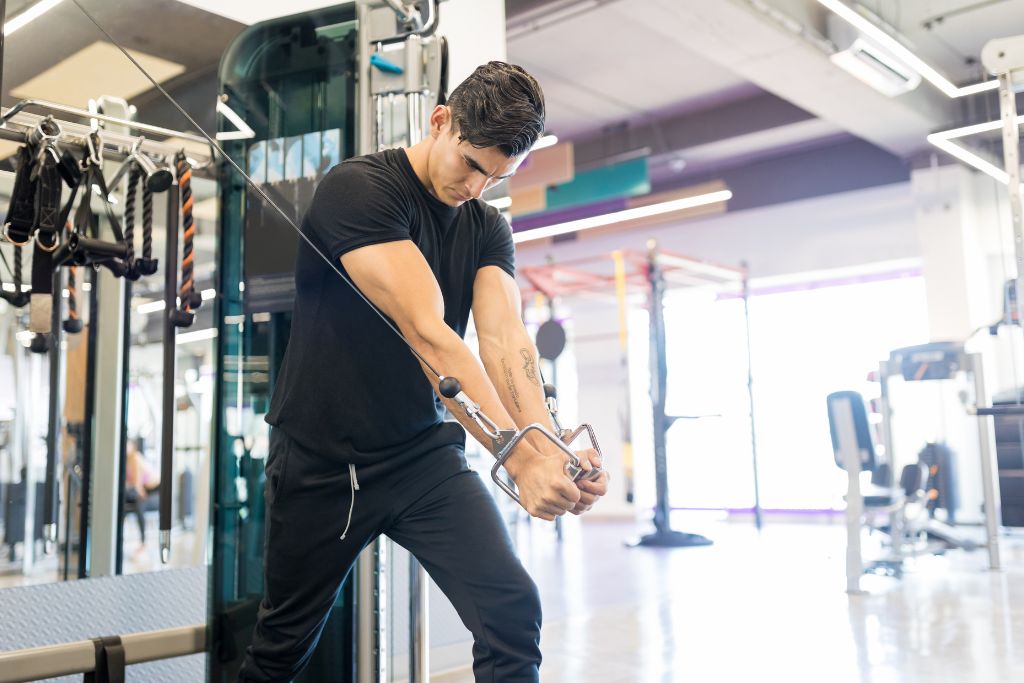I am excited to welcome you to the exciting world of fitness! Have you ever given thought to the processes that take place within your body during physical activity? It is a fascinating procedure that requires the cooperation of several different systems in an integrated manner. The more you know about the science behind fitness, the more you’ll not only be able to improve your workouts, but you’ll also have a greater respect for the remarkable things our bodies are capable of. In this article, we will delve into the inner workings of your muscular, cardiovascular, respiratory, and digestive systems, studying how they are all intertwined in the pursuit of optimal physical performance. Specifically, we will focus on how your digestive system affects your energy levels. Put on your best scientific hat because we’re about to dig headfirst into this topic!
Muscle System
Muscles and bones form the muscular system. Muscles power movement. Contracting muscles move us. Bones sustain the body. Muscular fitness matters. It moves, stabilizes, and strengthens. But how? Look closer.
Movement contracts and relaxes muscle fibers. Your brain controls these contractions, letting you lift weights, run marathons, and do yoga positions precisely. Your body has skeletal, smooth, and cardiac muscles. Bone-attached skeletal muscles enable voluntary motions like walking and jumping. Smooth muscles line the intestines and control digestion. Cardiac muscle keeps your heart beating strong.

Exercise strengthens and improves your muscles. Muscle fibers rip as you exercise. These tears fuse together during hypertrophy, increasing muscle size. Next time you flex those biceps or go through a set of squats at the gym, remember that it’s not only about looking good; it’s about knowing how this magnificent system works in harmony to help us reach our fitness objectives!
Cardiovascular System
Our cardiovascular system—the heart and blood vessels—maintains our health and fitness. It delivers oxygen-rich blood to all bodily cells. Running or cycling revs our cardiovascular system. To satisfy muscle demands, our heart rate rises when we move. To oxygenate active muscles, blood vessels dilate.
Cardiac output—the heart’s blood pumping rate—increases during exercise. Each beat sends more blood into circulation. Our muscles receive more oxygenated blood and can operate harder without tiredness. Regular cardio strengthens this system. It boosts lung capacity and oxygen extraction from inspired air. It strengthens and improves heart pumping.

Jogging regularly lowers resting heart rate because a well-conditioned heart pumps more efficiently with each pulse. Regular aerobic workouts also cut LDL cholesterol and raise HDL cholesterol. Hypertension and coronary artery disease risk reduced. Maximizing fitness requires understanding how your body works throughout the activity. When you exercise, your cardiovascular system delivers oxygen and nutrients to your body. Cardio activities boost endurance and health.
Before starting an exercise program, visit a doctor.
The Lungs
Our respiratory system is essential. Its organs and tissues let us breathe and get oxygen. Our lungs, which breathe, are the heart of this system. Air enters our nose or mouth, travels down the windpipe, and enters our lungs as we inhale. Alveoli in the lungs exchange oxygen for carbon dioxide.
The respiratory system isn’t only the lungs! The diaphragm is a dome-shaped muscle that contracts and relaxes to help us breathe, and the bronchi, bronchioles, and capillaries are all vital. Exercise boosts our respiratory system. Muscles require more oxygen, so we breathe faster. Increased ventilation ensures that oxygen-rich blood reaches all bodily parts efficiently.

Lung capacity increases with regular exercise. Running and swimming regularly build lung muscles and improve oxygen delivery to the bloodstream. Aerobic exercise also improves cardiovascular health, which brings us full circle as both systems operate together!
Understanding how each part works in this complicated network helps us appreciate how amazing our bodies are! Let’s keep working toward fitness objectives while enjoying science’s findings!
GI System
Our digestive system breaks down food, absorbs nutrients, and eliminates waste. Teeth and saliva break food down in the mouth. Food enters the stomach via the esophagus. The stomach mixes gastric fluids with food to break it down. The small intestine absorbs most nutrients.
Villus-like extensions line the small intestine to maximize nutrition absorption. Nutrients enter the bloodstream and are distributed throughout the body to give energy and support biological activities. What about the indigestible parts? They enter the colon. Undigested material absorbs water before becoming feces.

A fiber-rich diet, plenty of water, and frequent exercise help our digestive system function effectively. This aids digestion and prevents constipation and diarrhea. Understanding your digestive system might help you eat healthier. Appreciate your fantastic digestive system next time you eat!
Exercise’s Effects
Exercise has several health benefits. Physical activity alters our bodies molecularly. Exercise strengthens and improves muscle function. Muscle mass and strength increase. Exercise releases endorphins, which improve mood and reduce stress.
Regular exercise strengthens the heart muscle and improves blood flow, improving cardiovascular health. Resting heart rates and blood circulation improve.

Regular exercise improves lung capacity and respiratory health. Running and cycling enhance oxygen intake, strengthening our lungs. Physical activity promotes metabolism. Regular exercise boosts muscle mass and BMR, burning more calories even during rest.
Proper digestion requires exercise. Intestinal contractions from exercise assist in regulating bowel motions. Healthy digestion and nutrient absorption help manage weight. Understanding how exercise impacts body systems emphasizes its importance for health and well-being.
Exercise Benefits
Exercise benefits your mind and body. Regular exercise improves mental and physical health. Exercise boosts heart health. Running, cycling and swimming strengthen your heart and lungs, improving oxygen and nutrition delivery.
Exercise helps manage weight too. Regular exercise burns calories and builds muscle, speeding your metabolism. This improves weight loss and body composition.

Exercise offers several mental health benefits as well. It decreases cortisol and releases mood-boosting endorphins. Regular exercise improves sleep, cognition, anxiety, and depression.
Daily exercise also prevents chronic disease. Regular exercise may reduce the risk of cardiovascular disease, type 2 diabetes, cancer, and osteoporosis.
As we study fitness and the body’s systems, sleep’s importance in optimizing our health must be acknowledged. “The Importance of Sleep – How to Develop Healthy Sleep Habits and Improve Your Sleep Quality” discusses the health benefits of restful sleep. Understanding the relationship between exercise, nutrition, and sleep helps us create fitness programs that support our body’s natural functions. We may maximize our fitness journey and achieve physical balance by emphasizing sleep and recuperation. As we study fitness, let’s also recognize sleep’s vital role in our health.



